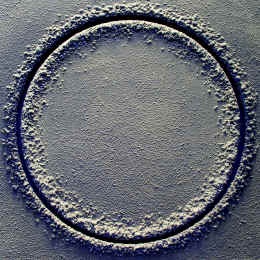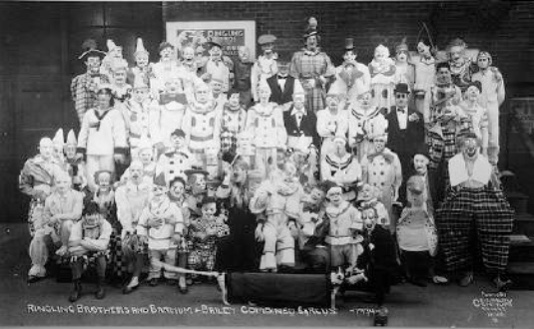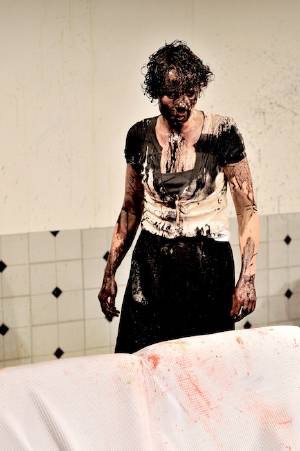There is, of course, nothing funnier than a man covered in shit. It’s hilarious. What’s even more hilarious is when the man is first not covered in shit (because nobody wants to be covered in shit) then, because of a failure, he is suddenly covered in it. If he were to walk in covered in it that would be quite funny but not as side-splitting as when he comes in, with all his innocence, his arrogance, his complacency, his sheer deserving of something bad, his cleanliness, the fact that his things are in the right place and then he falls into a hole full of shit or, equally, a load of shit falls on him from out of nowhere. This is real humour.

Most of the people I know say that one of the toughest tasks they ever faced in a long life was learning to control their bodily functions. Before the Law was introduced, life was endlessly forgiving. In fact, the very concept of ‘forgiving’ was inapt. What was to forgive? You could do what you wanted, where you wanted. For a while, this looked likely to be the general setup. Then a reward system was introduced and you knew something was up because before that they didn’t need to reward you because everything was so dandy in the first place.
The clowns of the Zuni and the Yaqui and other Native American tribes had devised antidotes to such pomp that were a corrective to lifetimes of muscle control. The practice of ‘filth-eating’ by the clowns drew startled responses from the 1930s anthropologists who ‘discovered’ them:
“These masked men teased one another…they simulated eating and drinking the excreta they would pretend to catch from their wooden machete from the body of passing burro or horse or man or woman, even of one kneeling in prayer.”
The Sacred Clowns of the Pueblo and Mayo-Yaqui Indians. Elsie Clews Parsons & Ralph L. Beals. American Anthropologist, Vol 36, No. 4. 1934.

The purity and danger economy prevailed, however, and it was only natural that there arose a great nostalgia for the golden days of incontinence. This was a fraught state of affairs insofar as attempts to invoke such a return risked a possibly terminal social exclusion.
“The scatalogical practices among some of the clown societies of the Pueblo Indians, particularly the Zuni, are notorious examples of this clownish capacity for pointing to and containing the total human condition. One is initiated into the Zuni Ne’wekwe by a ritual of filth-eating – a strange sort of Eucharist indeed. Mud and excrement are smeared on the body for the clown performance, and parts of the performance may consist of sporting with excreta, smearing and daubing it, or drinking urine and pouring it on one another. Among the Hopi, a group of males known as ‘singers’ play about with vulva-shaped sticks during initiation ceremonies, singing taunting and obscene songs to the women and running after them to ‘bless them’ with filth. The women, in turn, being well-prepared, douse the singers with foul water or urine.”
The Spirituality of Comedy: Comic Heroism in a Tragic World. M. Conrad Hyers. 2008

The clown, with his pants falling down, recycles in the name of pure symmetry:
“Ne’wekwe knowledge not only cures stomach aches but also enables clowns to eat any kind, or amount, of food or garbage, including human excrement, and to engage in outrageous human behaviour without feeling shame.”
(The Beautiful and the Dangerous: Encounters with the Zuni Indians. Barbara Tedlock. 1992)
The business of running a tight outfit is onerous. The pants, and the hair, must be let down from time to time. Even under the patched and fraying canvas of the British travelling circus those big-shoed figures at whom the public (quite understandably) rarely laughs any more will enact great rituals of incontinence that reach the parts that the ironic quip cannot reach. In dashes Bonkers closely followed by Skanky and Roderigo. They are carrying ladders, planks, brushes and pots of paint. They are going to decorate something. Up go the ladders, between them go the planks. Skanky goes aloft with the pot and oh no…! Five minutes later they’re covered! What a mess! A veritable shit-storm!

The indispensable voidances passed from the circus as it waned and the variety halls and pantomimes as they gave way to black and white TV where, on Saturday night in the 50s with your Mum and Dad on either side, the diminutive redhead slapstick artiste Charlie Drake (catchphrase: Hello My Darlings! (you had to be there)) would take up employment in a pie, chocolate or, indeed, paint factory and, with complete inevitability, over the course of four or five minutes, move with polished incompetence to a condition of fully glazed muckiness. I wept with glee and, had I not sensed at some obscure level that the viewings were precisely designed to tone rather than relax the muscular clenching without which one cannot step forth into polite society, I would have wet myself.
 In the sixth Dash show, ‘Gush’, is the funniest thing you ever saw. A man comes into a room and torrents of blood fall on him from above. Later on a woman takes the lid off a tin up on a high shelf and is covered in blue paint. Then a man is being kicked and beaten fiercely and yellow paint falls down on him. Then a woman tries to stop a man attacking her with a bottle and black paint falls on them both.
In the sixth Dash show, ‘Gush’, is the funniest thing you ever saw. A man comes into a room and torrents of blood fall on him from above. Later on a woman takes the lid off a tin up on a high shelf and is covered in blue paint. Then a man is being kicked and beaten fiercely and yellow paint falls down on him. Then a woman tries to stop a man attacking her with a bottle and black paint falls on them both.
Well worth doing, I promise you. Murder to rig, though. The liquids, two litres at a time, were delivered from buckets suspended way up in the grid, where the lights hang. Each bucket was tipped by cords pulled from backstage. If the actors were more than an inch out of position the liquids dropped right beside or behind them without marking them in the least. Such was the volume of screaming, howling, banging and infernal 170 bpm Dutch gabber that the backstage crew couldn’t hear their cues and, until reliable systems were eventually devised, the actors had to shout key words repeatedly (‘Yellow!’ was one such cry) in order to get coloured in.
Fittingly, after having become a site for the unabashed display of fluid wastes, three of the figures on stage are garrotted by a psychopath. They let themselves go – what did they expect?
photo from ‘Gush’ by Ed Telling
14.06.2010


